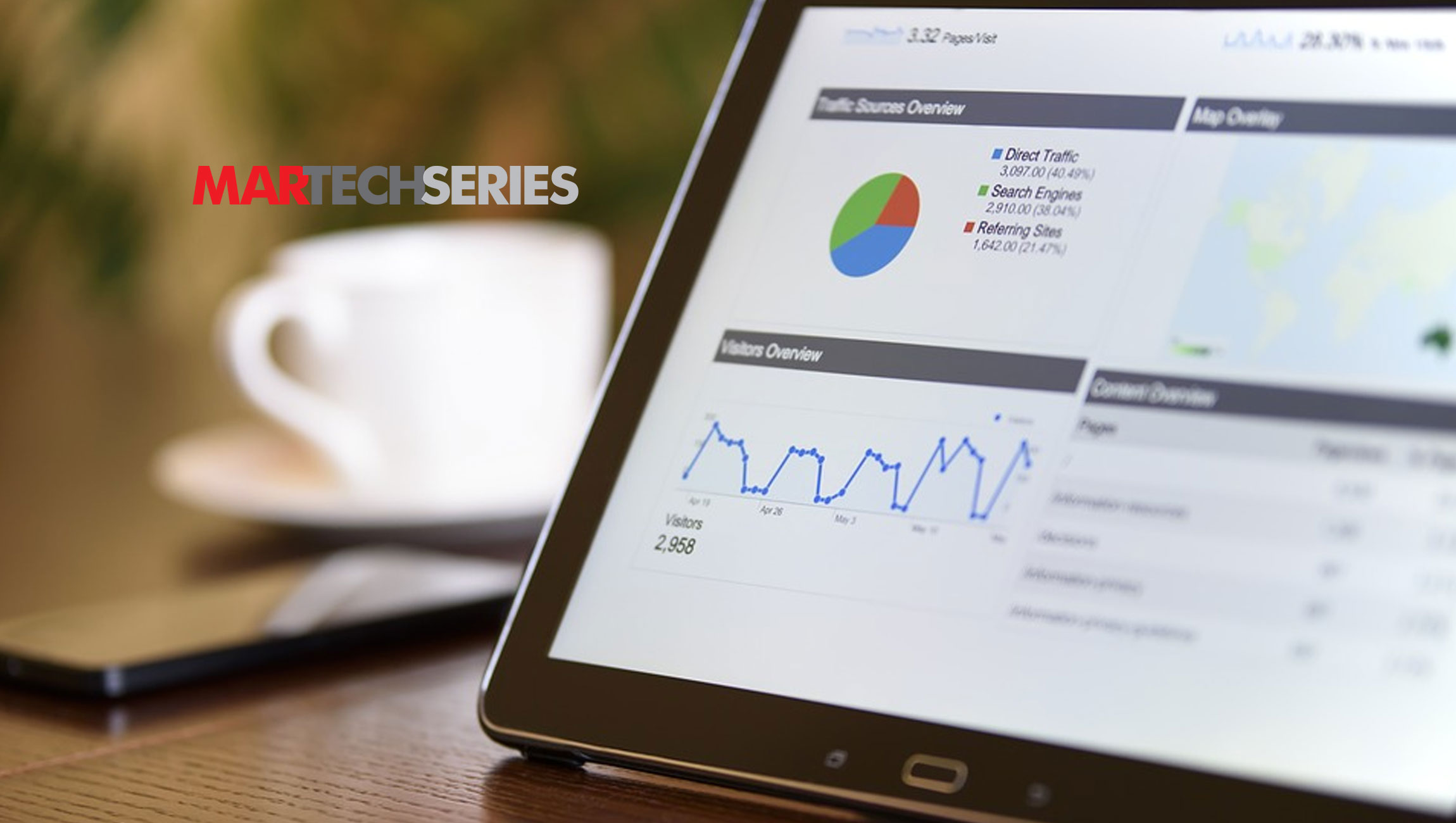Tell us about your role and how you got here. What inspired you to be part of a Location Data company?
Blis emerged from my senior thesis at university, where I identified a market opportunity to use mobile, wireless technology, and location intelligence as a way of accurately targeting audiences for digital advertisers. I have designed and engineered intelligent demand-side and data management platforms, even steering the product development of several patented Blis inventions.
In my role as CEO, I oversee the global business including the management of technical engineering, product strategy, financial management, talent acquisition and international market expansion. We have grown across the EMEA, Asia-Pacific and North American markets.
How is the European data market different from its Asian and North American counterparts? What are the opportunities and challenges in the European data market?
There is a challenge for us when it comes to building consumer trust as consumers are expressing concerns that tech and retailers are coming for our data. The responsibility and onus is on the brands and the tech industry at large to counter this perception. With GDPR being implemented, consumers will see brands operating and communicating with transparency and honesty. With consumers in control of their own data, the trust should start to be rebuilt. I think the EU will be leading this charge since they are taking the steps to fix confidence and security before the rest of the world
How do you see Location Data technology creating more opportunities for marketers in delivering impactful results in Customer Experience and Social Media Advertising?
With access to location insights, brands can serve relevant and useful content to customers. For instance, take a national grocery market chain, an extremely competitive sector. Using location data, they know when customers are looking for a certain product (via content engagement or online searches) and if they are near the store. With that information, they can alert consumers to relevant promotions and send coupons right when the customer is on the way to the store, ultimately helping retain the consumer and giving them a great experience.
How should CMOs use Location Data to create their Ideal Customer Profile?
Location data is becoming increasingly valuable as the fight for consumer attention and dollars becomes more and more competitive in the digital space. Using location-based services allows brands to gain a fuller, richer view of their customers’ behaviors historically and in real-time and how they interact with competitive brands. These insights can be used to make strategic decisions about products they carry, store location and targeting techniques. In addition, this objective, passively collected data can really shine a light on the actual store-to-store behavior of shoppers with a granularity that survey data simply can’t match allowing brands to understand who their shopper base is.
How does Blis deal with inaccurate and fraudulent data? What analytics do you use to segregate these from real-time data?
The main challenge in using location data to inform campaigns has been the amount of fraudulent information and holes in the data provided. With 50-70% of GPS data being inaccurate, the fraud needs to be removed leaving the data sets a fraction of the size and needing to be scaled up again in order to identify meaningful trends. We use verified GPS data scaled out to public wifi. All Blis-verified location data passes through our quality control technology to filter out inaccurate and fraudulent points so that we’re only working with sources we can trust.
What startups in the martech and adtech industries are you keenly following?
All the ICO companies looking to shake up the industry
What Marketing and Sales Automation tools and technologies do you use?
As a business, we use HubSpot and Zoho.
Would you tell us about your standout digital campaign?
A campaign I’m proud of and that earned us an award from The Drum US was with a design studio. We used our proprietary technology to create unique and relevant audience segments-“Design professionals”, “Art enthusiasts”, and “Creative Thinkers”– for a design studio client looking to reach a niche group of design creatives with ads driving them to an upcoming design event. We then monitored the behavior of all exposed devices to the advertising and tracked foot traffic to the client event. From this campaign, we were not only able to exceed the client’s goals, but we were able to offer rich insights to help guide their overall marketing strategy. In addition to driving awareness and foot traffic to the client event, the client event had one main sponsor–an auto dealership. The client wanted to monitor subsequent foot traffic of the sponsors auto dealerships to showcase the impact the sponsorship had on the event attendees to the auto sponsor. This campaign required results beyond standard digital metrics like CTR. The power of location data and combining the insights of location with that of digital engagement yields far more insightful results for marketers. Understanding behavior and behavior patterns can drive a change in marketing strategy.
- Results included
- More than 60% of the creative community identified was reached in New York City
- 1,169,221 overall impressions were served and 5,885 click generated (0.5% CTR)
- 182,356 uniques generated
- 261 individuals were seen as a result of the advertising at the design event space
- Footfall rate of 1.4% with an uplift of 32% compared to the control group
How do you prepare for an AI-centric world as a business leader?
At Blis, we work to get ahead of the trends but we don’t follow until their impact on value is clearly measurable. By staying on top of the tech, we can work to integrate it when it makes sense for our customers. As far as AI goes, just last year we launched the industry’s first AI-powered mobile advertising solution– Blis Futures– which predicts future location behavior and helps brands prevent the waste of ad spend.
How do you inspire your people at Blis to work with technology?
I work to recruit smart people, and to create an environment that enables them to use that intelligence to its fullest. I trust people to get on with the task at hand without my checking in. By the same token, I try to make it very clear that I am ‘open-door’ by nature; I try to ensure that every individual on my team knows they can approach me with questions or problems. It’s valuable for me because it gives me insight into the day to day challenges of different roles in different geographies, and I see it as an investment in my ‘trust’ savings account with that person.
One word that best describes how you work.
Collaborative
What apps/software/tools can’t you live without?
Google Inbox and my diary.
What’s your smartest work related shortcut or productivity hack?
Blocking time on my calendar to read and catch up on emails.
What are you currently reading?
Tools of Titans
What’s the best advice you’ve ever received?
The most valuable thing for me has been to have a mentor – a person I can bounce ideas around with and who can question and stress test ideas and plans. It’s easy to become locked into one way of thinking and the act of opening up the kimono to someone else can be invaluable.
Tag the one person in the industry whose answers to these questions you would love to read:
Thank you Gregor! That was fun and hope to see you back on MarTech Series soon.
Greg is the Founder and CEO of Blis. He is a location data technology expert who has designed and engineered intelligent demand-side and data management platforms. Greg identified a market opportunity in 2004 to use mobile, wireless technology, and location intelligence as a way of accurately targeting audiences for digital advertisers – Blis emerged as a culmination of these opportunities.
In his role as CEO, Greg oversees Blis’ global business. This includes the management of technical engineering, product strategy, financial management, talent acquisition and international market expansion. The company has expanded across EMEA and Asia-Pacific markets under his leadership and is currently entering the North American market.
Greg has steered the product development of several patented Blis inventions and has also served as a board member of the Mobile Marketing Association UK.

Blis is the global pioneer in location data. Our proprietary technology and platform helps agencies and brands use location data to better understand consumer behavior, allowing for effective targeted advertising to drive business outcomes. We believe that where you go defines who you are, and advertisers must capitalize on these insights for meaningful marketing experiences across devices. Our technology filters and scales location data, giving advertisers access to the most accurate location events, location data, and unique devices. The data is then applied across the apps that matter most to their consumers for targeting based on rich insights. Clients are supported by our location experts or can work in an agnostic service model of their choice. Since creating the world’s first location data technology platform in 2004, Blis has grown to be a global company with 17 offices across 5 continents. Blis’ clients include all major holding companies as well as leading brands in top verticals including Samsung, McDonald’s, HSBC, Mercedes Benz and Peugeot.
The MTS Martech Interview Series is a fun Q&A style chat which we really enjoy doing with martech leaders. With inspiration from Lifehacker’s How I work interviews, the MarTech Series Interviews follows a two part format On Marketing Technology, and This Is How I Work. The format was chosen because when we decided to start an interview series with the biggest and brightest minds in martech – we wanted to get insight into two areas … one – their ideas on marketing tech and two – insights into the philosophy and methods that make these leaders tick.











